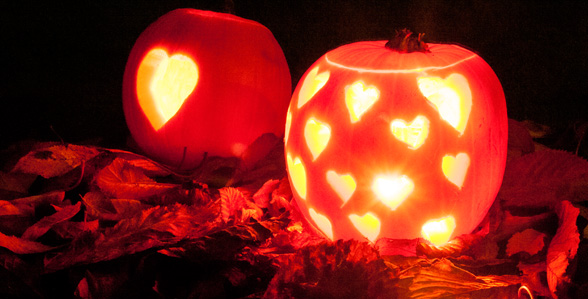Halloween Traditions around the World

If you are thinking about travelling abroad this Halloween, you might be surprised to find that for other countries the end of October isn’t all about trick-or-treating and pumpkin carving. For many countries Halloween, in its varied forms, is a day where the spirits of the dead can connect with the living.
Halloween as we know it in the UK is believed to originate from Ireland and the ancient Celtic festival of Samhain. This festival, at the end of October, celebrates the end of the harvest season and was a time to gather supplies in preparation for winter. On October 31st it was thought that the boundaries between the world of the living and the world of the dead overlapped so that the deceased could come back to life and cause havoc by damaging crops. This is how the tradition of bonfire was created – the ancient Gaels believed that the fires would ward off unfriendly ghosts. They also wore masks and costumes to mimic the evil spirits or appease them. Nowadays in Ireland, costumes are still extremely popular as well as games like ‘snap apple’, treasure hunts, card games and the traditional food of “barnbrack”.
In the 19th century Irish immigrants carried traditions of Halloween to North America and now in England and the United States, Halloween is a massive consumer holiday. Traditional activities involve bonfires, costumes, trick-or-treating, bobbing for apples and pumpkin carving. France however did not adopt these Halloween traditions until recently, as Halloween was regarded as an “American Holiday”. It was unknown of in the country until around 1996.
In the rest of Europe, Halloween has deeper roots of spiritual and religious traditions. For instance, Austrians consider it a magical night where you should leave bread, water and a lit lamp on the table to welcome the dead souls back to earth.
Likewise, in Belgium they light candles in memory of dead relatives and in Czechoslovakia chairs are placed by the fireside to honour each living family member and each family member’s spirit.
Italian customs involve making a bean-shaped cake called Beans of the Dead. Families in southern Italy also prepare a feast for the departed relatives and then go to church leaving their homes open for the spirits to feast.
Whilst in Germany the holiday has become increasingly popular as a massive secular event, there are still some Germans who complete the tradition of hiding their knives on Halloween. This tradition is believed to decrease the risk of harming or being harmed by returning spirits.
In China, Teng Chieh is the Halloween festival; food and water are placed in front of photographs of departed family members. To light the paths for the spirits who travel that night, bonfires and lanterns are lit.
Hong Kong’s Halloween is called “Yue Lan” or “Festival of the Hungry Ghosts” as they believe that spirits roam the earth for 24 hours. It is tradition to burn pictures of fruit or money so that they will reach the spirit world and comfort the ghosts.
In Mexico and some places in Latin America, their Halloween festivities are known as “El Dia de los Muertos” – the days of the dead. The ancient festival lasts three days from October 31st to November 2nd and is a time to remember the dead as well as appreciate the continuity of life. Families and friends come together to celebrate their loved ones and there are also big parades. Most people dress up as skeletons and dance in the streets; sometimes a live person is placed inside a coffin which is then paraded through the streets.
Wherever you choose to travel, it is no doubt that Halloween is considered by all to be an eerie day; to prevent any more scares than necessary, make sure you book your airport parking early with I Love Meet and Greet.
By Sarah Anglim at 27 Oct 2015